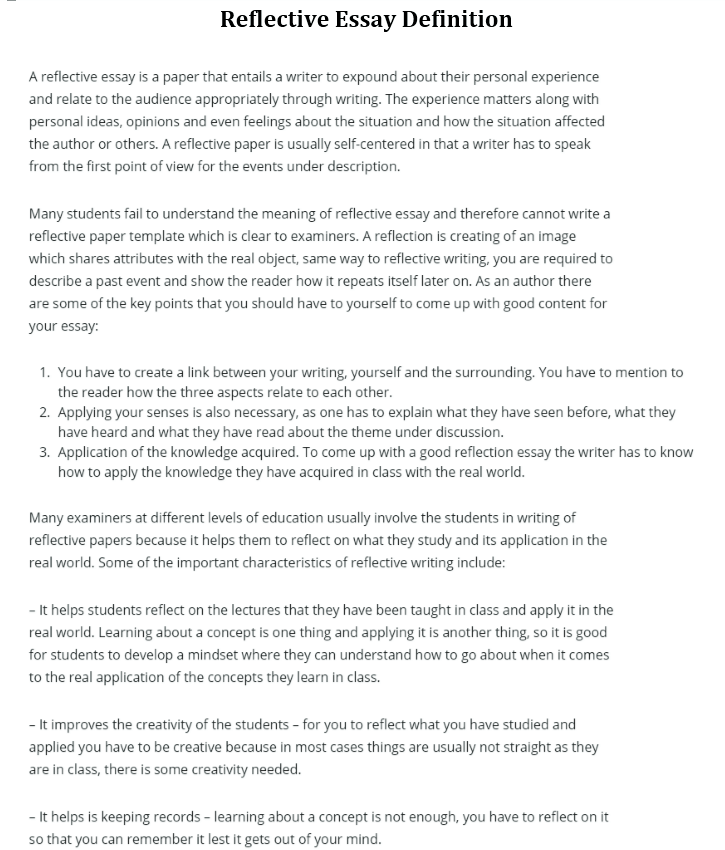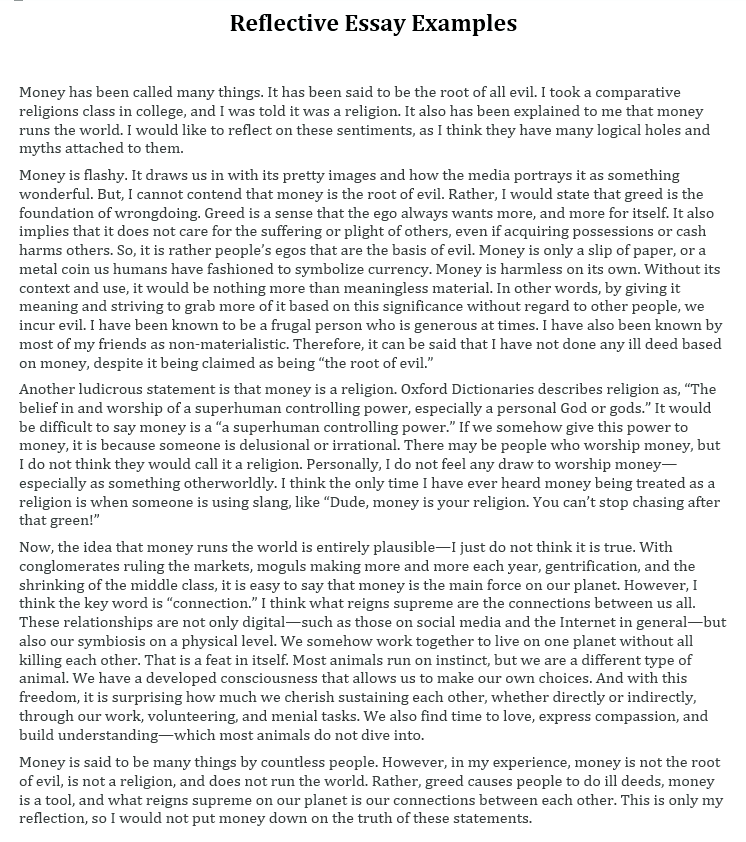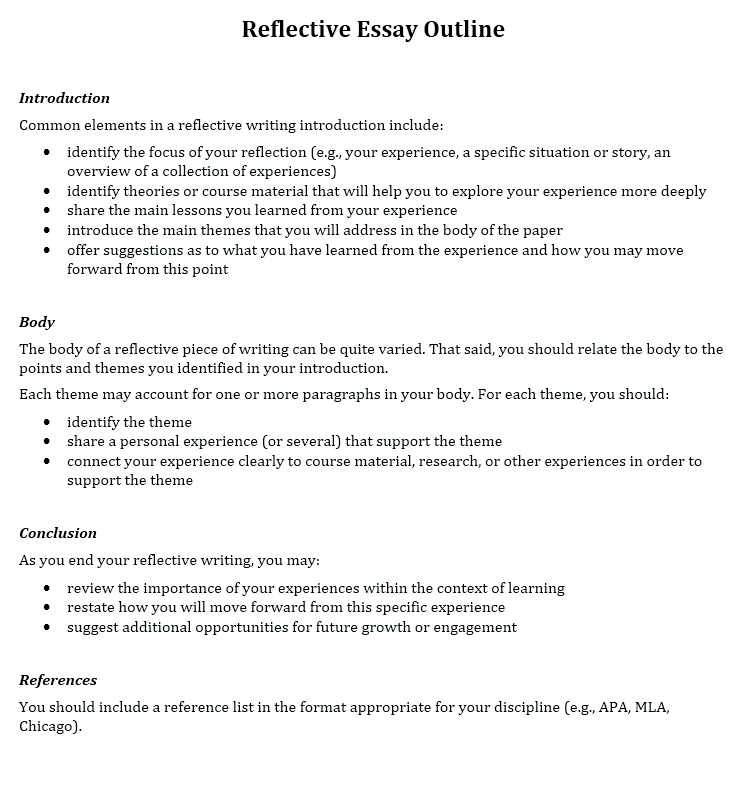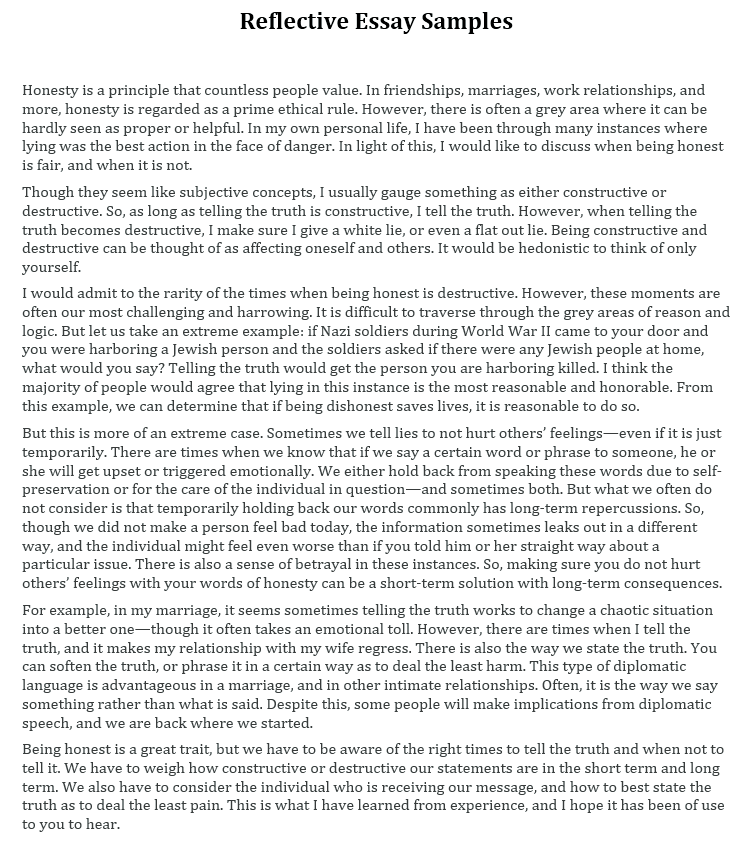A reflective essay is a written assignment where you need to take an event from the past, describe its meaning and significance, and then explain how it reflected on the present. Reflective essays are among the most personal written assignments you will ever need to write. They deal with your own experiences, memories, and emotions. That is why they are both easy and challenging to write.
A reflective essay requires you to look deep into your personality and analyze how different events shaped you to be the person you are today. What’s even more challenging is the fact that not all reflective essays deal with real events from your past. In some cases, you will be required to write about an imagined experience, and while it may seem easier than writing about real-life events, it’s actually even more complicated.
What is the Purpose of Reflective Writing?
Have you ever wondered why reflective writing is something only high school and college students are assigned? The reason for that is that reflective essays are incredibly complex pieces of writing that require you to do a lot of thinking. Even though the core of your reflective essay will stem from your personal experience, it’s not enough to simply describe an event from the past. You also need to offer your deep analysis from the event, including the positive and negative aspects of this experience and what exactly can be done to improve the results of the event should it occur again in the future.
The reason why reflective essay writing is so important is that it teaches you to deeply analyze and evaluate your actions and change your behaviour in case you feel it had a negative effect on your present life. An essay is certainly not the only way to practice reflective writing; in fact, many students encounter reflective storytelling long before they are assigned an essay thanks to personal diaries. However, even if you have never tried reflective writing in the past, it is still possible to deliver a great reflective essay from the first try thanks to our tips.
What is a Reflective Essay Format?
Now that you have a better idea about the content and the purpose of a reflective essay, let’s take a closer look at the technical side of the writing process. First of all, let’s answer the question: How many paragraphs are in a reflective essay? Like many other essays, a typical reflective essay has five paragraphs:
- an introduction;
- three body paragraphs;
- a conclusion.
The most popular approach to writing the body paragraphs of a reflective essays is to use the chronological order. According to this approach, you will list the events in a chronological order and offer critique and analysis of the events as you go along. Depending on the tone and content of your essay, you can adopt a different approach, and the results can be just as impressive! It’s very important to not simply describe the events and summarize them, but also reflect on their importance and how they influenced the subsequent events.
An important part of writing a reflective essay is to create an outline. An outline is not required in most schools and colleges, but it can be very helpful for structuring your work and always staying on point. An outline will help you avoid repetitions and meaningless words, as you will always be able to look at the outline and remember what you need to talk about next.
How do you Start a Reflective Essay?
In most cases, the introduction to your reflective essay is the first thing the readers see, which is why you need to pay special attention to this short but important part. The job of an essay introduction is to both get the audience acquainted with the topic and get it motivated to continue reading. Two elements of the reflective essay introduction are used to achieve those two goals:
- The hook, which is normally the first sentence or the first paragraph of your essay. It needs to be striking, captivating and memorable, so that the readers don’t have a choice but continue reading your work. In case of a reflective essay, the hook should be based on the main event of the essay.
- The thesis statement, which lays the groundwork for the essay and, essentially, gives you something to write about. The thesis statement formulates the focus of the essay and will be referenced in other parts of the work, so make sure to pay a lot of thought to this small fragment of your writing.
While the introduction should offer the readers a taste of what they are about to read in your essay, it doesn’t need to give too much away. You need to intrigue the audience with your introduction, yet leave the most interesting information for the body paragraphs of the essay.
What is an Example of Reflective Essay?
Many students find that seeing an example of a reflective essay helps them better understand the nature of this assignment and ace this challenge. It can be particularly helpful if you have never written a reflective essay before and want to do a great job despite your lack of experience.
Moreover, studying a couple of reflective essay examples helps you get familiar with the format and the different parts of the writing. You can clearly see which elements make a reflective essay as unique and important as it is.
We have prepared a selection of reflective essay examples crafted by top USA writers. These essays were written on different subject and for different academic levels. What unites them is that they are beautifully written and conform to every standard of USA schools and colleges. If you want to familiarize yourself with the tricky format of a reflective essay or get some inspiration and new ideas for your own writing, you will find some prime examples of reflective essays below!




